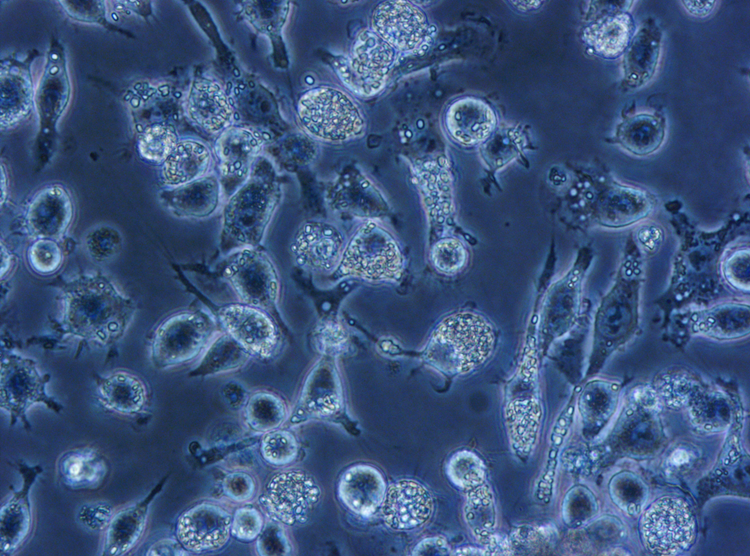Ensuring top-notch immunity isn't just about battling diseases – it's about preventing them too. That's where our secret weapon comes in: beta glucans. By boosting the animal immune system, beta glucans not only enhance vaccine responses but also fortify animals against stress and inflammation.
Picture this: throughout her lifetime, a sow receives several vaccines, each playing a crucial role in safeguarding her health and boosting immunoglobulin levels in colostrum for her piglets. While some vaccines are highly effective, adding a 'boost' effect can be a game-changer, rapidly stabilizing herds during outbreaks and priming piglets for a resilient future.
The best part? Incorporating immunomodulators like beta-glucans doesn't just amplify one vaccine – it boosts our entire vaccination program, ensuring maximum protection for your herd.

Beta-glucans are potent immunomodulators that fine-tune the body's immune response, enhancing its ability to defend against pathogens while regulating inflammation. By activating immune cells like macrophages and cytokines, beta-glucans boost immunity, making them invaluable in improving vaccine efficacy and overall health in animals.
Beta-glucans have a track record of enhancing immunity. They can be sourced from various natural sources. Common sources include yeast, oats, barley, and algae. These sources provide different types of beta glucans, they are not the same!
Linear beta-(1,3)-glucans are the most effective ones as they are more recognisable by the receptors in macrophages and dendritic cells. Linear beta-(1,3)-glucans can come from unicelular algae, now, lets don not confuse this with seaweed, because it is not, it is an amazing algae that grows naturally in fresh water.
In essence, beta glucans, once ingested, interact with the Dectin-1 receptor in macrophages and dendritic cells within the gut's lymphatic tissue. This interaction triggers a cascade of internal reactions, ultimately boosting the production of interleukins and other chemoquines. These substances facilitate lymphocyte differentiation and enhance the secretion of immunoglobulins. Linear beta glucans are preferred due to their superior binding capability compared to ramified forms, optimizing their immunomodulatory effects. Thus linear beta (1,3)-glucans coming from a unicellular algae , are more potent and effective than the ramified version coming from yeast. Due to it is composition it is easy to bind when they are linear. Let’s not confuse unicellular algae with seaweed, unicellular algae that grows in fresh waters and on a lab and under specific and controlled environment produces beta (1,3)-glucans which are readily available and with a standardised concentration
Enough of the science behind it, lets jump off the lab and move to the farm from some real life experiences.
A Farm in Segovia with two buildings of 500 pigs each. All in all out per building but not per farm.
This farm was chosen as at the same time, due to flow constrains at that time, the oldest pigs (market weight) share the same farm (but not the same room) with the young 22kg pigs recently transferred.
We have studied 4 consecutive batches and we could see a decline from the transfer weight that started at 22kg down to 19kg. The average can be seen in figure 1.
Pigs were tested 5-7 days after arrival. The last batch of the 4 batches without AletaTM was positive to PRRS.
The BG batch (supplemented with 200g/t of beta-(1,3)-glucan across all diets) was stable and virus was not circulating thanks to the boost on vaccinal response.
In figure 1 we can see that the weight at entry with the BG group was lower, however they managed to reach the same final weight.Figure 1


Figure 2 days too slaughter and average daily gain
Reducing 11 days is impressive, and if it happens every single batch we could be saving up to 55 days per year which could be between 60-70% of a finisher cycle.
Let us be real, as this might not be the case all the time as PRRS circulation will fluctuate. But at today’s market price we only need to reach market weight 1.5 days faster to pay for the whole treatment. If we save 11 days in only one batch (the problematic one) per year, we not only pay for the treatment for the whole year, but also we end up making more profit and boosting performance.
In conclusion, incorporating an immunomodulator into your finisher herd management strategy offers dual benefits: rapid stabilization and heightened vaccine efficacy, maximizing the value of your investment. To delve deeper into this transformative approach. Empower your operation today!
© Kemin Industries, Inc. and its group of companies 2026 all rights reserved. ® ™ Trademarks of Kemin Industries, Inc., USA
Certain statements may not be applicable in all geographical regions. Product labeling and associated claims may differ based upon government requirements.